A visit to modern-day Romania, home of Dracula, a step back in history
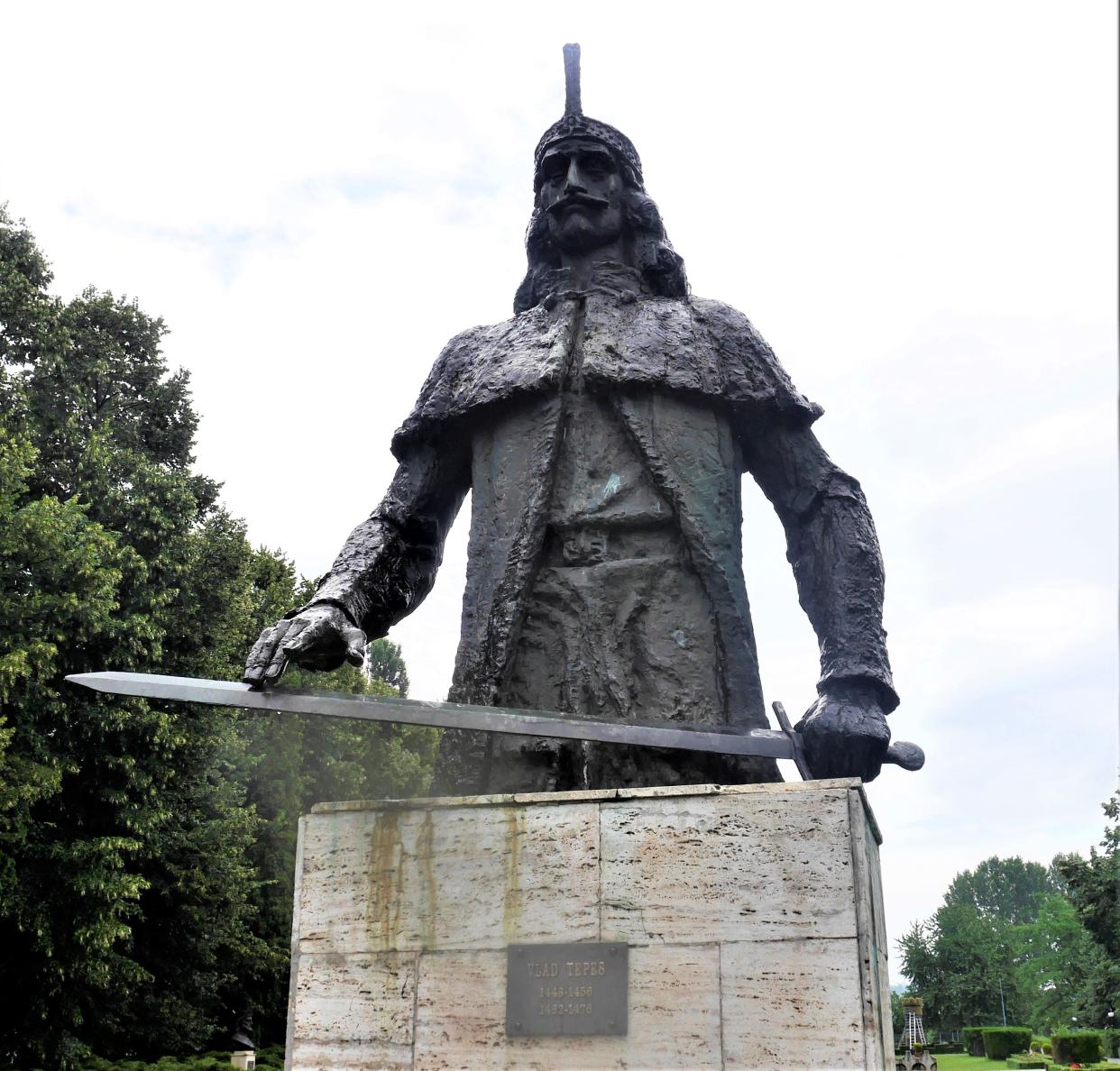
- Oops!Something went wrong.Please try again later.
When one thinks of where not to go if you do not want to be spookified, it is a deep, thick forest in a foreign land, especially if that far-off territory is the home of one of the world’s most terrifying despots.
I’m not talking about North Korea, Russia, or China — though any of those may fit the bill for terrifying places to visit with their current leaders. The focus of this column is the beautifully forested county of Romania could summon up scary images also.
Not present-day Romania. Romania today is a lovely country to visit. Friendly people, delicious food, gorgeous landscape, historical towns, and just a locale that breathes welcome.
But the Romania of the past, where diabolical fiends rule. In 1897, Bram Stoker published a novel with such a fiend that they perished with fright when certain folks read the pages.
“I believe your husband perished of fright while reading Dracula by Bram Stoker,” a physician told a bereft wife.
“Could it have been the lorry that ran over him?”
“No, he was carrying this book in his hand at the time, and I believe in science, so it was fright.”
Controversy abounds if Stoker used Prince Vlad III of Romania as a model for his Count Dracula — some experts say he did not, and some he did.
So, let the experts battle this one out, but Stoker probably gave a lot of credence to using Vlad III as the antagonist in his novel.
The novel describes Transylvania, dark castles on hilltops, Count Dracula, a bloodthirsty man, and the list goes on and on.
During his reign in the 15th Century, it is estimated that Vlad III may have been responsible for killing upwards of 60,000 men.
Thus another name his enemies, the Ottoman Turks, used when referring to Vlad III was Vlad Tepes — Vlad the Impaler.
One of his most infamous ways of doing away with someone was impaling them on wooden spikes.
Yikes.
Being this is a family-friendly publication, I will not go into detail.
And to this day, Vlad Tepes is considered a national hero in Romania.
Double Yikes.
This article is not about Vlad but about Romania being one of the most haunted countries in Europe.
“I thought we were,” a man from Poland said.
“Sshh,” his friend is rumored to have said. “Vlad Tepes may be listening.”
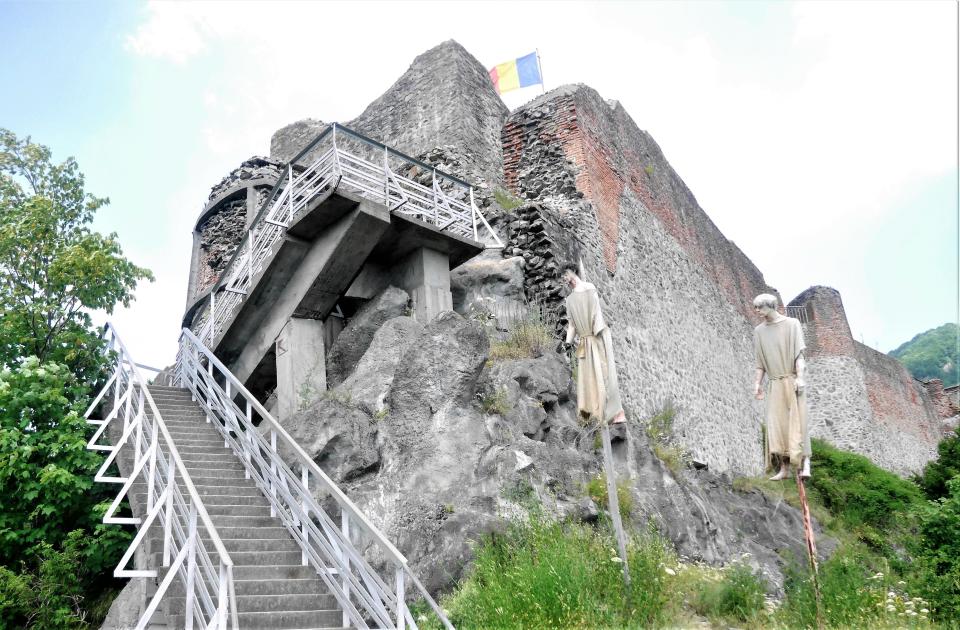
“I thought he died in 1476.”
“Did he?”
So, on the trail of Vlad III, Laureen and I found ourselves at the hilltop home of the former ruler of Wallachia, a section of modern-day Romania north of the Danube, east of Serbia, and south of the Carpathian Mountains.
This section of the territory once belonged to Hungary. Still, as Hungary weakened with continual war with the Ottoman Turks, it was possible to unify Wallachia and create its entity.
It came into existence in the early 14th Century.
This is the land Vlad III ruled, and one of his favorite haunts was the Poenari Fortress, located high on the plateau of Mount Cetatea. It overlooks the Transfagarasan, a canyon formed on the Arges River valley. It is an easy view to see the Fagaras Mountains.
A perfect spot to watch for any enemies approaching from any direction — and Vlad III had a lot of enemies.
It was mid-afternoon when Laureen and I rolled into Arefu, a small village just two miles from Poenari Fortress. A beautifully scenic setting with tall, forested mountains in every direction and the clear waters of the Arges River flowing close by.
Some may be familiar with the town since it is the settlement in the Capital Wasteland in the Fallout online game dealing with faux vampirism. The name Arefu is used due to how close it lies in connection with Vlad Tepes’s high mountain abode.
In all transparency, I did not know that and had to research the topic.
A game about vampires. What is next, one about zombies?
We had a quick bite of lunch as following Vlad’s footsteps left one hungry, and while sitting on the outdoor patio, we struck up a conversation with our waitress.
She knew we were American tourists right away.
“What gave us away?” I asked.
She pointed at my shirt. “I think it is reading your t-shirt: America is Number One.”
Nadia, I think her name was, told us about the hauntings at and around the Poenari Fortress.
“I will not go near there after dark,” she said while delivering a nice cold Timisoareara.
“Then we must,” I replied while turning my head to Laureen.
The hauntings of Poenari Fortress are legendary.
When Vlad III came to power, he knew a highly defensible fort or castle was needed. Poenari, at the time, was in ruins, but Vlad III came up with an ingenious way to rebuild it.
“I believe the rich should pay their fair share,” he was rumored to have said.
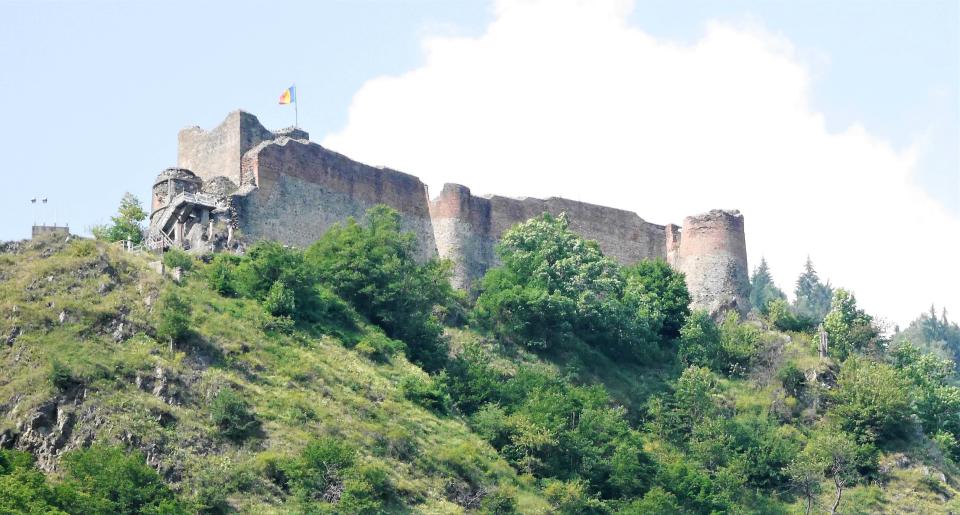
His soldiers then rounded up about 600 boyars, the politically influential rich of the time, and forced them to rebuild the fortress high atop steep cliffs.
There was no redemption for any of the captives. It was a cruel existence, and they worked rebuilding stone by stone until they perished.
When the fortress was completed, those who had lived through the ordeal were immediately impaled around the grounds for all to see.
In 1462, during Vlad III’s second rule as Prince of Wallachia, the Turks attacked Poenari Fortress with canon, and soon the situation grew desperate. Vlad knew everyone needed to escape, but his first wife, Jusztina, may have committed suicide by jumping from the fort’s walls into the deep canyon below where the Arges River flowed rather than being taken captive.
A search for her body was conducted under darkness, but she was never found.
Today, per local legend, "The Lady of the River" can still be seen at night walking the shores of the quickly moving Arges River.
According to Nadia, wails and cries can be heard around Poenari Fortress from the pain and suffering endured by the hundreds of boyars forced to partake in rebuilding the castle.
We drove the short distance and walked the 1478 stone steps to the fort. Yes, I counted them and, besides being exhausted, knew I had just dropped five pounds in the sunny, humid afternoon jaunt.
I was carrying a backpack and some water bottles. The water for obvious reasons but there were also costumes so we could ham it up on Poenari.
“We’ll look great,” she had said. “Period dress is always good.”
“Unless you are hefting it.”
There is a small guard and ticket booth not far from the trailhead to Poenari, where two men were speaking to each other in Romanian and probably drinking Romanian tea. That’s how they do it in Romania.
“You should be down before dark,” the ticket-taker told us. “We will not be here after dark, and you should not be either after dark.”
Warning heard.
At the entrance to the castle itself, there were mannequins impaled on long wooden poles greeting us.
“Lovely,” Laureen said.
We walked around carefully since the fort is situated on sheer cliffs with a drop of nearly one thousand feet to the river and valley floor. Most of the place no longer exists, but with a good imagination, one can easily visualize what the small but impressive fort must have looked like so many centuries ago.
We were the only ones present, so we donned our apparel and took photos of each other. We were having such a marvelous time at Vlad’s place posing this way and posing that way that time got away from us.
“It’s getting dark,” Laureen said.
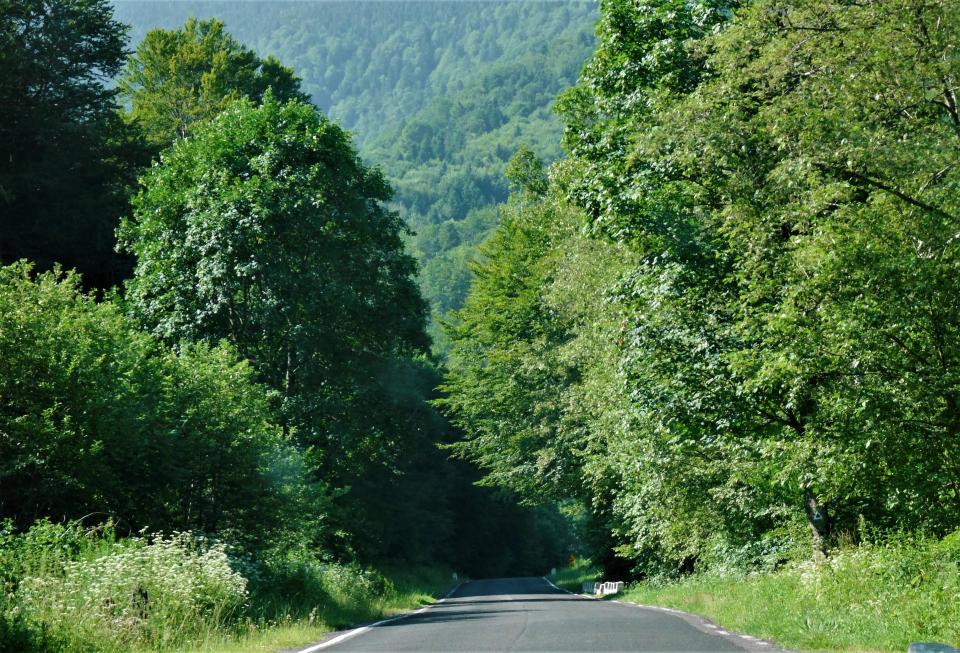
The distant mountaintops were no longer visible, and the sun set quickly.
“Probably should be going,” I replied.
Strange how we packed up our costumes and, in the distance, a soft but audible breath of air tacked through the valleys and into the ruins of Poenari, directly chilling us to the bone.
I kept packing.
“We should be going,” Laureen said.
And we did.
Each step upon a broken stone sounded as though we were no longer alone. A howl suddenly sounded not far away.
“Wolves,” I said. “They live in these mountains.”
“Thanks for that reassurance.”
I am skeptical about hauntings, but as the sun set faster and the descent seemed slower from the castle, I wondered if I may change my mind as we reached the rental car.
“We need to move faster,” Laureen said.
“I can barely see the steps,” I replied.
To our right came a rustling in the trees. From our left came a rustling in the bushes.
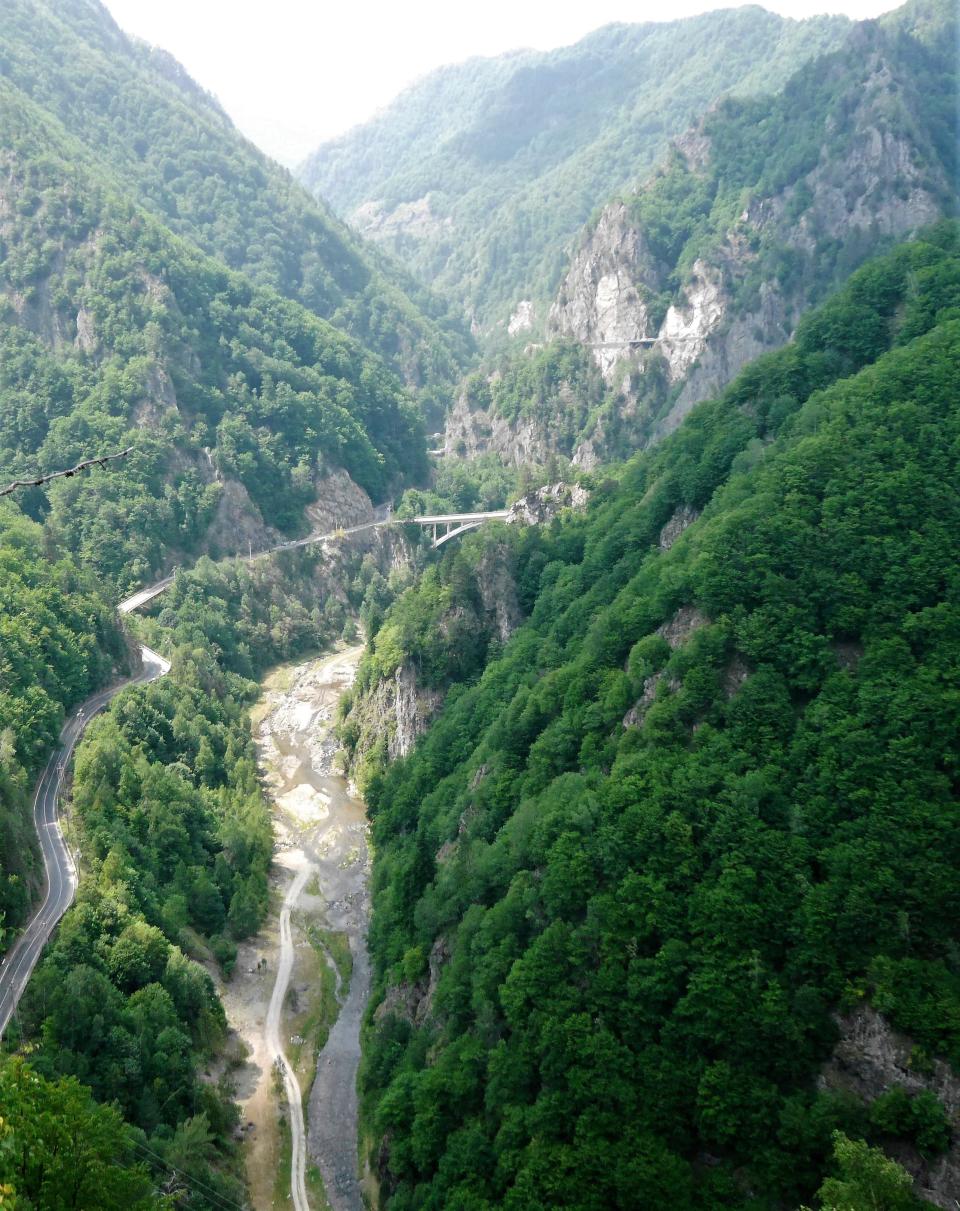
The guard shack was deserted.
From above, a sound like a man screaming sent the hairs on my neck straight up.
We made it down in near darkness and at record speed.
“See, nothing to worry about,” I said.
“Did you see that?” Laureen asked while pointing across the road toward the Arges River right below Poenari.
I did. “Probably just the moonlight dancing on the top of the waters.”
“There is no moon tonight,” Laureen replied.
This article originally appeared on Victorville Daily Press: A visit to modern-day Romania, home of Dracula, a step back in history

